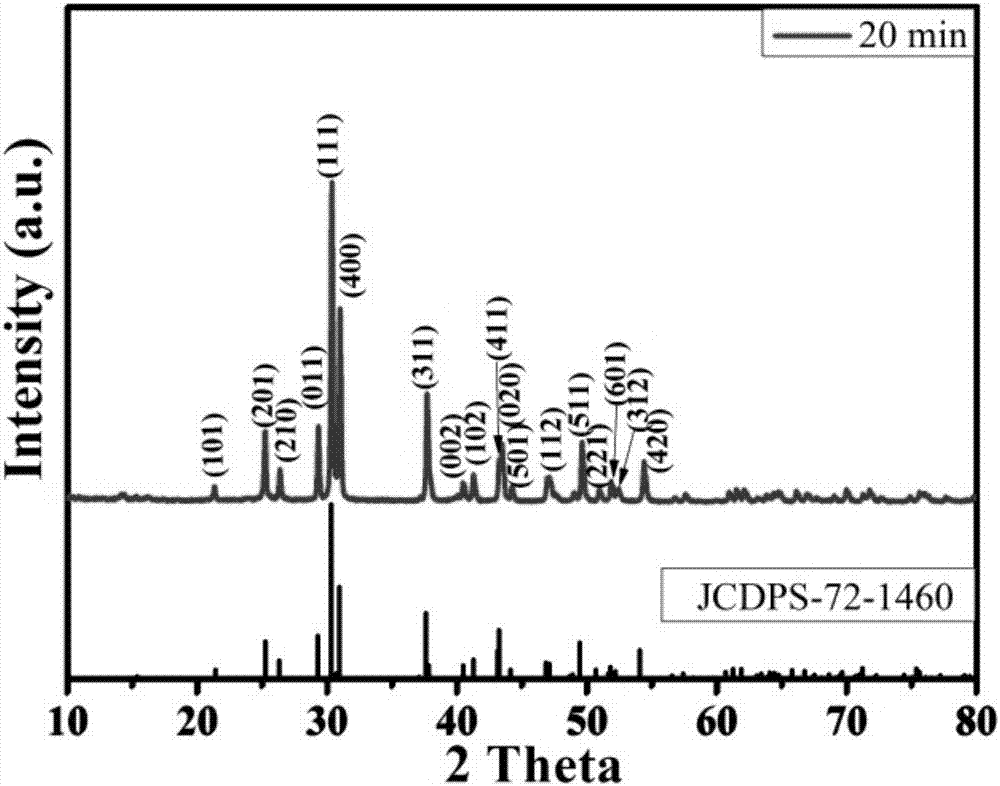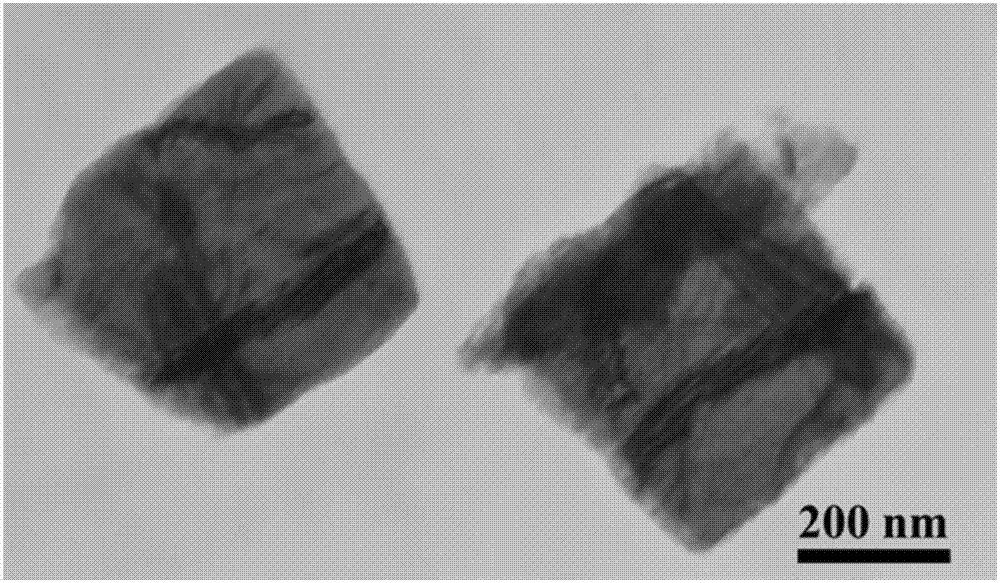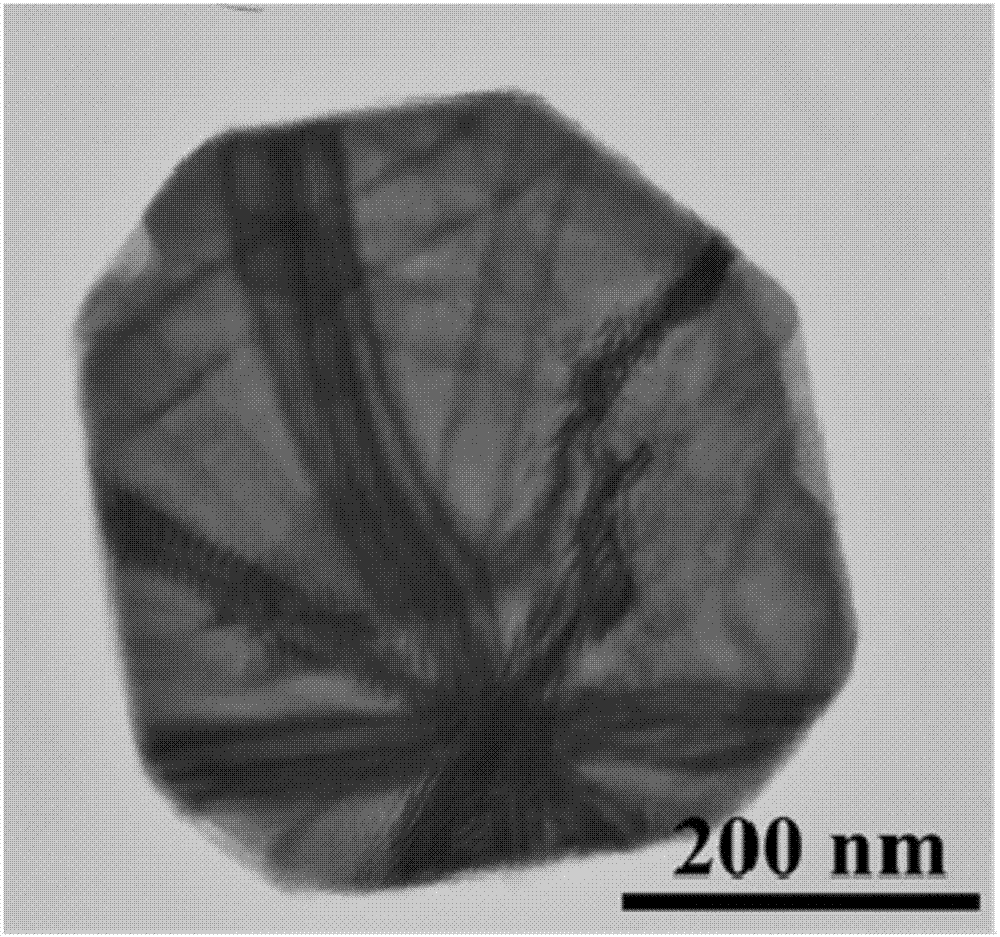Method for quickly synthesizing tin selenide nano sheet by microwave assistance
A microwave-assisted, tin selenide technology, applied in nanotechnology, binary selenium/tellurium compounds, etc., can solve the problems of long synthesis time, expensive materials, complex synthesis process, etc., and achieve efficient use of energy, saving preparation time, size controllable effect
- Summary
- Abstract
- Description
- Claims
- Application Information
AI Technical Summary
Problems solved by technology
Method used
Image
Examples
Embodiment 1
[0030] The preparation of SnSe includes the following steps:
[0031] Step 1, 0.902g stannous chloride dihydrate (SnCl 2 2H 2 (2), 0.16g selenium powder (Se), 8g potassium hydroxide (KOH) and 120ml ethylene glycol join in the beaker, 100 ℃ of oil bath heating and stirring 40min;
[0032] Step 2, add 4g potassium borohydride (KBH 4 ) Continue heating in an oil bath and stir until no bubbles are produced, then cool to room temperature;
[0033] Step 3. Transfer to a household microwave oven (Galanz, P70F23P-G5(SO)) and heat at medium-low heat for 8 minutes, rest for 2 minutes, and black precipitate appears after reheating for 7 minutes, and cool down to room temperature again;
[0034] Step 4, extracting the black product obtained by centrifuging at a speed of 4000r / min for 5min;
[0035] Step 5, alternately add ethylene glycol and ethanol to the black product and centrifuge at a speed of 10000r / min for 5min to remove impurities;
[0036] Step 6. Finally, place the cleaned ...
Embodiment 2
[0039] The preparation of SnSe includes the following steps:
[0040] Step 1, 0.45g stannous chloride dihydrate (SnCl 2 2H 2 (2), 0.16g selenium powder (Se), 4g potassium hydroxide (KOH) and 120ml ethylene glycol join in the beaker, 100 ℃ of oil bath heating and stirring 30min;
[0041] Step 2, add 2g potassium borohydride (KBH 4 ) Continue heating in an oil bath and stir until no bubbles are produced, then cool to room temperature;
[0042] Step 3. Transfer to a household microwave oven (Galanz, P70F23P-G5(SO)) and heat at medium-low heat for 8 minutes, rest for 2 minutes, and black precipitate appears after reheating for 15 minutes, and then cool to room temperature again;
[0043] Step 4, extracting the black product obtained by centrifuging at a speed of 4000r / min for 5min;
[0044] Step 5. Alternately add ethylene glycol and ethanol to the black product and centrifuge at a speed of 8000r / min for 5min to remove impurities;
[0045] Step 6. Finally, place the cleaned b...
Embodiment 3
[0048] The preparation of SnSe includes the following steps:
[0049] Step 1, 0.451g stannous chloride dihydrate (SnCl 2 2H 2 (2), 0.16g selenium powder (Se), 4g potassium hydroxide (KOH) and 120ml ethylene glycol join in the beaker, 100 ℃ of oil bath heating and stirring 30min;
[0050] Step 2, add 2g potassium borohydride (KBH 4 ) Continue heating in an oil bath and stir until no bubbles are produced, then cool to room temperature;
[0051] Step 3. Transfer to a household microwave oven (Galanz, P70F23P-G5(SO)) and heat at medium-low heat for 10 minutes, rest for 3 minutes, and reheat for 10 minutes. After 20 minutes of heating, a black precipitate appears, and cool to room temperature again;
[0052] Step 4, extracting the black product obtained by centrifuging at a speed of 4000r / min for 5min;
[0053] Step 5, alternately add ethylene glycol and ethanol to the black product and centrifuge at a speed of 10000r / min for 5min to remove impurities;
[0054]Step 6. Finally,...
PUM
 Login to View More
Login to View More Abstract
Description
Claims
Application Information
 Login to View More
Login to View More - R&D
- Intellectual Property
- Life Sciences
- Materials
- Tech Scout
- Unparalleled Data Quality
- Higher Quality Content
- 60% Fewer Hallucinations
Browse by: Latest US Patents, China's latest patents, Technical Efficacy Thesaurus, Application Domain, Technology Topic, Popular Technical Reports.
© 2025 PatSnap. All rights reserved.Legal|Privacy policy|Modern Slavery Act Transparency Statement|Sitemap|About US| Contact US: help@patsnap.com



